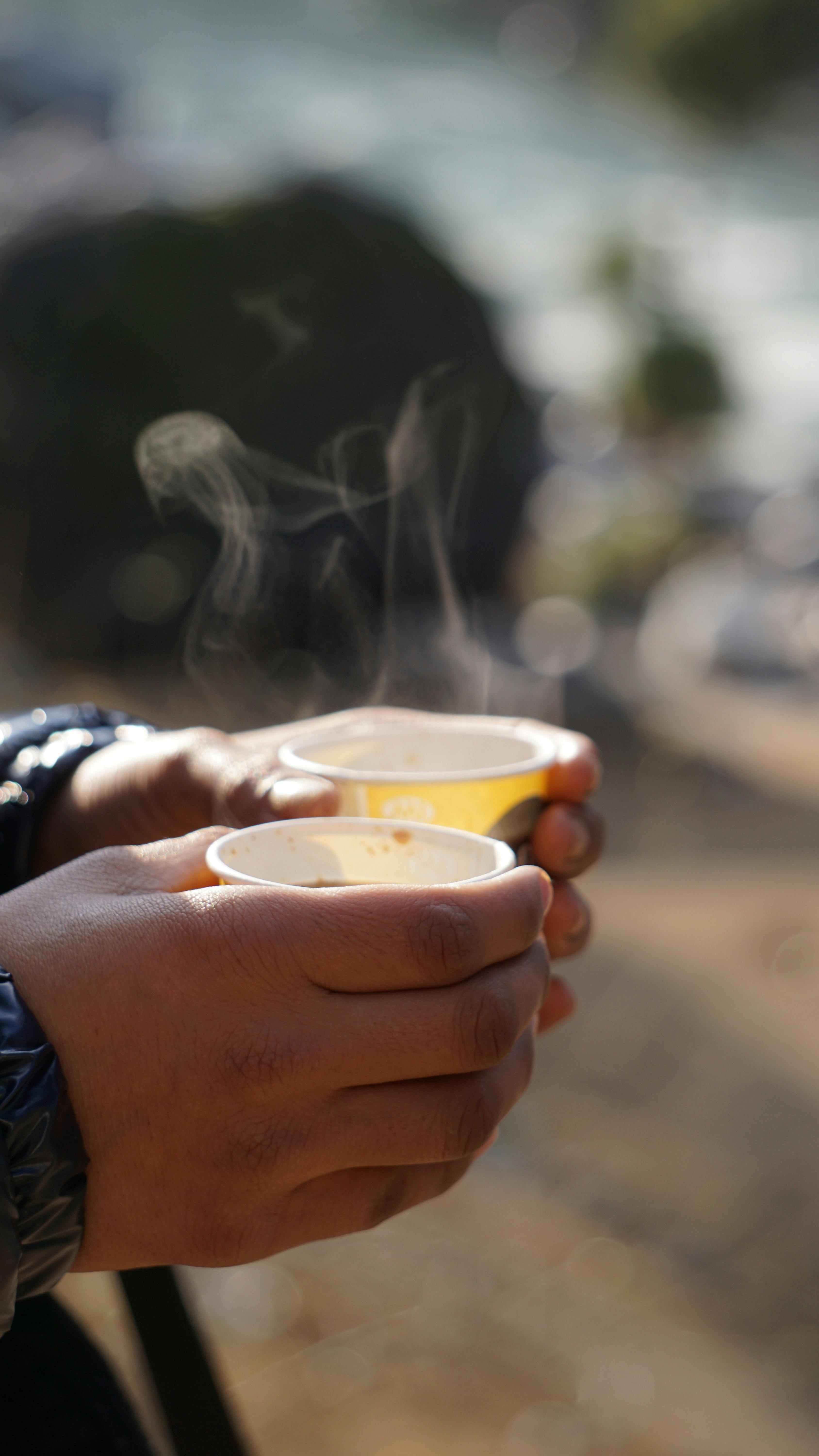Imagine undergoing a therapy where glass or silicone cups are placed on your skin to create suction and enhance blood flow. This ancient practice, known as cupping therapy, has gained significant popularity in recent years. From reducing pain and inflammation to promoting relaxation and well-being, cupping therapy offers a range of potential benefits. In this article, we will explore the history, techniques, and potential benefits of cupping therapy, providing you with a comprehensive understanding of this fascinating alternative treatment method.
What is Cupping Therapy?
Cupping therapy is an alternative healing technique that has been practiced for thousands of years. It involves placing cups on the skin to create suction, which is believed to promote blood flow and enhance healing. Cupping therapy is often used to treat musculoskeletal pain, respiratory issues, digestive problems, and even skin conditions. This ancient practice has its roots in traditional Chinese medicine but has spread to other cultures around the world. In recent years, cupping therapy has gained popularity and recognition for its potential benefits in pain relief, improved circulation, detoxification, and relaxation.
History of Cupping Therapy
Ancient Origins
The origins of cupping therapy can be traced back to ancient civilizations. It is believed to have been practiced in Egypt as early as 1,550 B.C. The earliest recorded evidence of cupping therapy comes from the Ebers Papyrus, an ancient Egyptian medical text. The Chinese also have a long history with cupping therapy and its use can be found in their ancient medical texts as well. It is clear that cupping therapy has been used for centuries as a form of healing and pain relief.
Traditional Chinese Medicine
Cupping therapy has a significant place in traditional Chinese medicine (TCM). In TCM, it is believed that cupping therapy helps to restore the balance of energy, or qi, in the body. According to TCM theory, when the flow of qi is disrupted or blocked, it can lead to pain and illness. By creating suction on specific points on the body, cupping therapy is thought to remove the blockages and promote the smooth flow of qi, thus restoring health.
Spread to Other Cultures
Over time, cupping therapy has spread to other cultures and regions around the world. It has been used in ancient Greek and Roman medicine, as well as in traditional Arabic medicine. The practice has also been found in various African and South American cultures. Each culture has its own unique methods and techniques of cupping therapy, but the underlying principles and benefits remain similar.

Types of Cupping Therapy
Dry Cupping
Dry cupping is the most common type of cupping therapy. It involves placing cups on the skin and creating suction without any additional methods or substances. The cups can be made of glass, bamboo, or even plastic. The suction is created either by heating the air inside the cup or by using a hand pump. Once the cups are in place, they are left on the skin for a few minutes to create the desired effect.
Wet Cupping
Wet cupping, also known as hijama, is a more invasive form of cupping therapy. It involves a two-step process. First, the cups are placed on the skin to create suction, just like in dry cupping. Then, small incisions are made on the skin, and the cups are reapplied to draw out a small amount of blood. Wet cupping is believed to help remove toxins from the body and enhance healing.
Fire Cupping
Fire cupping is a traditional method that uses fire to create suction. A cotton ball soaked in alcohol is set on fire and placed inside the cup. The cup is quickly placed on the skin, and as the fire burns out, it creates a vacuum that pulls the skin upwards. Fire cupping is often used for deep tissue massage and to address specific pain points.
Massage Cupping
Massage cupping combines cupping therapy with massage techniques. The cups are placed on the skin and moved along specific areas or meridian lines of the body while applying massage oil or lotion. This technique allows for a deeper and more targeted massage, as the suction of the cups helps to release tension and promote relaxation in the muscles.
Moving Cupping
Moving cupping is a technique where oil or lotion is applied to the skin before the cups are placed. The cups are then moved in a sliding motion along the surface of the skin, allowing for a gentle massage effect while retaining the benefits of cupping therapy. This technique is particularly effective for treating larger areas of the body or areas with a lot of muscle tension.
How Does Cupping Therapy Work?
Creating Suction
The primary mechanism of cupping therapy involves creating suction on the skin. This can be done using various methods, such as heat, hand pumps, or even mechanical devices. Once the cups are placed on the skin, the suction pulls the skin upwards, which in turn creates an inverse pressure on the underlying tissues.
Effects on the Body
The suction created by the cups has several effects on the body. Firstly, it helps to increase blood flow to the area, bringing more oxygen and nutrients to the tissues. This can aid in the healing process and reduce inflammation. Secondly, the suction helps to release fascia, the connective tissue that covers muscles and organs, allowing for improved range of motion and flexibility. Lastly, cupping therapy is believed to stimulate the lymphatic system, enhancing the removal of toxins and waste products from the body.
Stimulating Blood Flow
One of the main benefits of cupping therapy is its ability to stimulate blood flow. The suction created by the cups causes the blood vessels to expand, improving circulation in the area. Increased blood flow brings fresh oxygen and nutrients to the tissues, while also helping to remove metabolic waste and toxins. This enhanced circulation can promote healing, reduce pain, and alleviate muscle tension.

Conditions Treated with Cupping Therapy
Musculoskeletal Pain
Cupping therapy is commonly used for musculoskeletal pain, such as back pain, neck pain, and shoulder pain. The suction created by the cups helps to increase blood flow to the affected area, which can reduce inflammation and promote healing. Cupping therapy is often used in combination with other treatments, such as acupuncture or massage, to provide a comprehensive approach to pain relief.
Respiratory Issues
Cupping therapy has been used to address various respiratory issues, including asthma, bronchitis, and common cold symptoms. By applying cups to specific points on the chest and back, cupping therapy is believed to stimulate the respiratory system and improve lung function. The increased blood flow and lymphatic drainage can help to reduce congestion and promote better breathing.
Digestive Problems
Cupping therapy can also be beneficial for digestive problems, such as indigestion, bloating, and constipation. The cups are applied to the abdomen and lower back to stimulate the digestive organs and improve their function. The increased blood flow and lymphatic drainage can help to relieve congestion and promote better digestion.
Skin Conditions
Cupping therapy has been used to treat various skin conditions, including acne, eczema, and cellulite. By improving blood flow and lymphatic drainage, cupping therapy can help to reduce inflammation, detoxify the skin, and promote the regeneration of healthy skin cells. The suction created by the cups can also help to break up adhesions in the fascia, which can improve the appearance of cellulite.
Benefits of Cupping Therapy
Pain Relief
One of the primary benefits of cupping therapy is its ability to provide pain relief. The suction created by the cups helps to increase blood flow to the affected area, which can reduce inflammation and alleviate pain. Cupping therapy has been found to be particularly effective for musculoskeletal pain, such as back pain and joint pain. It is often used as part of a comprehensive pain management strategy.
Improved Circulation
Cupping therapy is known to improve circulation in the body. The suction created by the cups expands the blood vessels, allowing for better blood flow to the tissues. Improved circulation brings more oxygen and nutrients to the cells, promoting healing and reducing inflammation. This enhanced circulation can also help to remove metabolic waste and toxins from the body, improving overall health and wellbeing.
Detoxification
Cupping therapy is believed to have detoxifying effects on the body. The suction created by the cups helps to stimulate the lymphatic system, which is responsible for removing waste products and toxins from the body. By improving lymphatic drainage, cupping therapy can enhance the body’s natural detoxification processes, supporting overall health and wellbeing.
Relaxation
Cupping therapy can have a deeply relaxing effect on the body and mind. The suction created by the cups helps to release tension and tightness in the muscles, promoting relaxation and reducing stress. The gentle massage-like motion of the cups during massage cupping or moving cupping can further enhance the relaxation response. Many people find cupping therapy to be a calming and therapeutic experience.

Preparation for Cupping Therapy
Choosing a Practitioner
When considering cupping therapy, it is important to choose a qualified and experienced practitioner. Look for a practitioner who is licensed or certified in cupping therapy and has a good reputation. Ask for recommendations from friends, family, or healthcare professionals. A skilled practitioner will be able to assess your condition and customize the cupping therapy treatment to suit your needs.
Medical Evaluation
Before undergoing cupping therapy, it is advisable to have a medical evaluation to ensure that cupping therapy is suitable for you. Inform your healthcare provider about any existing medical conditions, medications, or allergies you may have. While cupping therapy is generally safe, there are some contraindications and precautions to consider. Your healthcare provider will be able to advise you on the appropriateness of cupping therapy for your specific situation.
Discussion of Expectations
It is important to have a thorough discussion with your practitioner about your expectations and goals for cupping therapy. Clearly communicate any specific areas of concern or symptoms you would like to address. Your practitioner will explain the cupping therapy procedure, including any potential side effects or sensations you may experience. Understanding what to expect can help you feel more confident and comfortable during the treatment.
Cupping Therapy Procedure
Setup and Equipment
The cupping therapy procedure begins with the setup of the treatment area. The practitioner will prepare the cups and any necessary equipment. The cups can be made of glass, bamboo, or plastic, and they come in various sizes and shapes. The cups may be sterilized before use to ensure cleanliness and prevent infection. The practitioner will also prepare the skin by cleaning it and applying a thin layer of oil or lotion to facilitate cup movement.
Cup Placement
Once the setup is complete, the cups are placed on the skin according to the treatment plan. The cups are typically positioned over specific acupuncture points, meridians, or areas of the body experiencing pain or tension. The practitioner will create suction by using heat, a hand pump, or a mechanical device. The cups may be left in place for a few minutes or moved in a sliding motion to provide a massage-like effect.
Cupping Duration
The duration of each cupping therapy session can vary depending on the individual and the specific treatment plan. Generally, cupping therapy sessions can last anywhere from 10 to 30 minutes. The length of each cupping session may also depend on the type of cupping therapy being used and the desired effects. Your practitioner will determine the appropriate duration for your cupping therapy session based on your specific needs and comfort level.
Post-Treatment Care
After the cupping therapy session is complete, it is important to follow any post-treatment care instructions provided by your practitioner. This may include avoiding exposure to extreme temperatures, drinking plenty of water to facilitate the removal of toxins, and avoiding strenuous activity for a short period of time. Your practitioner may also recommend certain stretches or exercises to enhance the benefits of cupping therapy. It is important to adhere to these instructions to optimize your healing and recovery.

Safety and Side Effects of Cupping Therapy
Temporary Discoloration
One common side effect of cupping therapy is temporary discoloration of the skin. The suction created by the cups can cause small blood vessels near the surface of the skin to rupture, leading to red or purple marks. These marks, known as cupping marks or “bruises,” typically fade within a few days to a week. The discoloration is generally painless and does not require any specific treatment.
Potential Burns
Fire cupping carries a risk of potential burns if not done properly. The practitioner must exercise caution when using fire to create suction and ensure that the cups are not overheated. It is important to choose a skilled and experienced practitioner who is well-versed in fire cupping techniques to minimize the risk of burns.
Allergic Reactions
In some cases, individuals may experience allergic reactions to the oil or lotion used during cupping therapy. If you have known allergies or sensitivities, it is important to inform your practitioner beforehand. They can choose a suitable oil or lotion that is hypoallergenic or discuss alternative options to ensure your safety and comfort during the treatment.
Infection Risk
While cupping therapy is generally safe, there is a minimal risk of infection if proper hygiene practices are not followed. It is important for the cups and equipment to be clean and sterilized before each use. Additionally, the practitioner must ensure that the skin is properly cleaned and prepared to minimize the risk of infection. Choosing a reputable practitioner who adheres to strict hygiene standards is essential to reduce the risk of infection.
Conclusion
Cupping therapy is an ancient healing technique with a long history and a wide range of benefits. Whether you are seeking relief from pain, improved circulation, detoxification, or relaxation, cupping therapy may be a suitable option for you. With its diverse types and techniques, cupping therapy can be tailored to address a variety of conditions and suit individual needs. By choosing a qualified practitioner and following proper preparation and aftercare, you can safely experience the potential benefits of cupping therapy. Consult with your healthcare provider to determine if cupping therapy is appropriate for you and to ensure that it complements your overall health and wellness goals.

